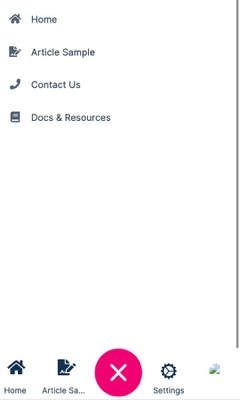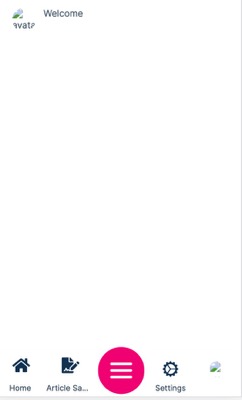"Navneet@aol.com.au" की गतिविधियाँ
1
You can customize the code templates to add partial keyword. https://docs.abp.io/en/commercial/latest/abp-suite/editing-templates
2
Because there is no such feature definition, you can add feature definitions in your own
FeatureDefinitionProvider: https://docs.abp.io/en/abp/latest/Features#featuredefinitionprovider And hide the menu&icon if the feature is not enabled.4
Replace OpenIddictApplication.cs with myOpenIddictApplication.cs Replace OpenIddictDbContextModelCreatingExtensions.cs with myOpenIddictDbContextModelCreatingExtensions.cs
You can't replace the OpenIddictApplication entity with your own. you can consider using the object extensions system: https://docs.abp.io/en/abp/latest/Customizing-Application-Modules-Extending-Entities
last, I want to replace AbpOpenIddictProPermissionDefinitionProvider.cs with my myAbpOpenIddictProPermissionDefinitionProvider
Configure<AbpPermissionOptions>(options => { options.DefinitionProviders.Remove<AbpOpenIddictProPermissionDefinitionProvider>(); });5
It's necessary, and it's safe.
6
You can create a separate project and copycat the public project to your solution.
7
public class MyToolbarContributor : IToolbarContributor { public virtual Task ConfigureToolbarAsync(IToolbarConfigurationContext context) { if (!context.ServiceProvider.GetRequiredService<ICurrentUser>().IsAuthenticated) { context.Toolbar.Items.Add(new ToolbarItem(typeof(LoginLinkViewComponent))); } return Task.CompletedTask; } } Configure<AbpToolbarOptions>(options => { options.Contributors.Add(new MyToolbarContributor()); });
Thanks liangshiwei
For point 1: Your method will apply to project wide, I have only three entity which I want to change generated by suite, can you please give me some sample code for entity “Book” and “Author” using partial class and using N-N navigation, I will use that sample to replicate in my project for other class.
For point 2: Thanks, I manage to create feature with below code, how to wireup with module so that I can control from FeatureManagement, by hiding icon & menu it does not disable if someone try to navigate manually.
Also, how can I show/hide in Roles --> Permission based on Feature is True/False
public class DocPaymentDefinitionProvider : FeatureDefinitionProvider
{
public override void Define(IFeatureDefinitionContext context)
{
var myDocs = context.AddGroup("Docs");
myDocs.AddFeature("Docs.Allow", defaultValue: "false");
var myPayment = context.AddGroup("Payment");
myPayment.AddFeature("Payment.Allow", defaultValue: "false");
}
}
For point 4: I need OpenIddictApplication.cs & OpenIddictDbContextModelCreatingExtensions.cs to inherit from my custom Iinterface class. Can you please help?
For point 7: The code you have suggested is already there in my project. On desktop screen login button is visible, however when I use on mobile device, the login button is not visible.
The links you have sent me see changelog, does not have details of change, it has simple summary in 2 or 3 word, how can I understand what is changed?
Regards, Navneet
3
Regarding ABP.Volo.Payment, why tenant has permission to create plan or update plan by default. I am just trying to understand what is the logic to allow tenant to change plans created by host. Is it to allow my tenants to set their own payment Payment Gateway so my tenant can issue their own invoice and received payment from their customers, like B2B2C
It seems there is a logical issue in there, we'll try to enhance this logic in the next version but you can use the following workaround in your application for now;
Create a PermissionDefinition provider in your project. (Applcation.Contracts prefferred)
And set multitenantcy side as Host for each permission in the group.
public class PaymentFixPermissionDefinitionProvider : PermissionDefinitionProvider { public override void Define(IPermissionDefinitionContext context) { var paymentAdminGroup = context.GetGroupOrNull(PaymentAdminPermissions.GroupName); if (paymentAdminGroup != null) { foreach (var permissionDefinition in paymentAdminGroup.Permissions) { ConvertToHostSide(permissionDefinition); } } } private void ConvertToHostSide(PermissionDefinition permissionDefinition) { permissionDefinition.MultiTenancySide = Abp.MultiTenancy.MultiTenancySides.Host; foreach(var childPermissionDefinition in permissionDefinition.Children) { ConvertToHostSide(childPermissionDefinition); } } }
Hi Enisn,
So, does it mean that It's only for Host purpose not Tenant purpose?
Regards, Navneet
Check the docs before asking a question: https://docs.abp.io/en/commercial/latest/ Check the samples, to see the basic tasks: https://docs.abp.io/en/commercial/latest/samples/index The exact solution to your question may have been answered before, please use the search on the homepage.
If you're creating a bug/problem report, please include followings:
- ABP Framework version: v7.0.3
- UI type: Angular / MVC / Blazor
- DB provider: EF Core
- Tiered (MVC) or Identity Server Separated (Angular): no
- Exception message and stack trace:
- Steps to reproduce the issue:"
Hello support team and other ABP users,
I have tried my level best to first search below issues but could not find solutions, I am a new developer so if any question is silly then sorry
Could you please help me with below:
After I create a new Module via ABP Suite with UI, the Suite create all necessary CRUD pages, model, DTO and repositories, however when I change anything manually, for example N-2-N relationship it creates only one side of UI and I manually create another side, the suite change the code back to default if I re-run the same entity generation. I believe I can get around by creating partial class, but as suite create a lot of classes in domain, efcore, application, applicationcontracts... I end up some errors with referring partial classes in repositories. IS it ok if you can provide a sample of book entity created via suite and using partial class. I believe that will be helpful for other community member looking for similar solution.
When I create a new application via suite and add Volo.Docs and Volo.Payment via suite, they are not part of Feature under Editions settings, but both are available under Role --> Permissions, can you please help me, how can I add them to Edition --> Features (can you please suggest any code I can override related class instead of changing source code, as I don’t have access to source code dueto my license)
Regarding ABP.Volo.Payment, why tenant has permission to create plan or update plan by default. I am just trying to understand what is the logic to allow tenant to change plans created by host. Is it to allow my tenants to set their own payment Payment Gateway so my tenant can issue their own invoice and received payment from their customers, like B2B2C
As I don’t have access to all commercial sourcecode due to license level, how can I override to make changes to base class, please code sample of only three, rest of classes I will figureout Replace OpenIddictApplication.cs with myOpenIddictApplication.cs Replace OpenIddictDbContextModelCreatingExtensions.cs with myOpenIddictDbContextModelCreatingExtensions.cs last, I want to replace AbpOpenIddictProPermissionDefinitionProvider.cs with my myAbpOpenIddictProPermissionDefinitionProvider
When I publish my project, I noticed that appsettings.secrets.json is also in published folder, is it safe to give it to my client while hand overing the finished Application
When I create a MVC Application with public page & CMS (identity & HostApi not separate), the public page does not use API but use database directly, how can I make it use API instead of interacting with DB directly (please note, I don’t want to have separate Identity & HostApi)
MVC public page, in responsive mode, I don’t see login button, it’s hidden, can you please help me, how can I fix it? Screenshot attached:


Is there anyplace like GitHub, can I read Commercial Module change log for example - CRMpro module changes from 7.0.1 to 7.0.3, this will help me to plan before migrating to next version.
Please let me know if anything not clear and I will try to give more details Regards, Navneet